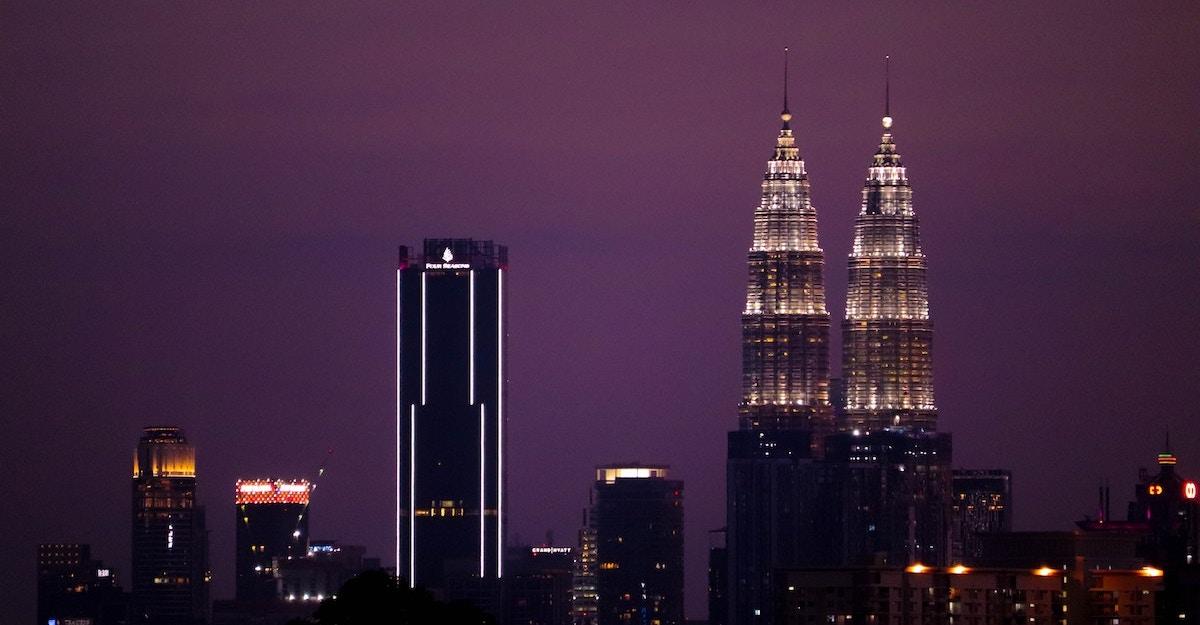Things to do in Kuala Lumpur
Kuala Lumpur is a year-round destination, where the skyline is a contrast of towering contemporary structures and charming heritage buildings. Visitors can enjoy a melting pot of Southeast Asia's traditional cultures and religions, as well as the affluent city's modern attractions.
The iconic Petronas Twin Towers are the world's tallest twin buildings, and Kuala Lumpur's most striking landmark. They're a good place for visitors to begin their sightseeing. The breath-taking National Mosque (Masjid Negara), Friday Mosque (Masjid Jamek) and the intricately ornate, Moorish-style Kuala Lumpur Railway Station carry an old-world charm. Visitors will find more interesting old buildings around Merdeka Square, where Malaysia first declared its independence in 1957. History buffs will love learning about the country's culture and heritage at the National Museum.
Outdoor enthusiasts must venture to the vast Taman Negara national park, which contains some of the world's oldest rainforest. Visitors can spend their time trekking, fishing, river rafting, bird watching or even climbing the peninsula's highest mountain, Gunung Tahan.
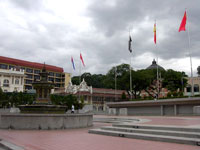
Merdeka Square (Dataran Merdeka)
At 328 feet (100m), the flagpole rising from Merdeka Square is one of the tallest in the world. More importantly, it marks the place where Malaysia achieved independence at midnigh…
Merdeka Square (Dataran Merdeka)
At 328 feet (100m), the flagpole rising from Merdeka Square is one of the tallest in the world. More importantly, it marks the place where Malaysia achieved independence at midnight on the 31th of August 1957. The square remains the heart of Malaysian nationalism, and one of the few places in Kuala Lumpur where colonial buildings still stand.
The city's colonial past is very much alive in the architecture and large field, which still hosts the occasional cricket match. The Tudor-style Royal Selangor Club rests on one corner of the square, and looks onto a large video screen displaying adverts and religious messages. Once a social centre for Kuala Lumpur's British residents, its doors are now open to anyone who can afford the membership fees. As die-hard custom dictates, women are not allowed to enter the bar save by invitation.
Other buildings of interest around the square include St. Mary's Church, which is supposedly the first church built in the city, and the Abdul Sambad building, which was built for one of the sultans. Travellers will find some shops and restaurants in the area.
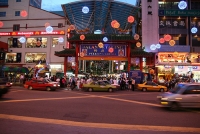
Chinatown
Chinatown is an intoxicating jumble of crowds, colours and authentic food. The central section of Petaling Street is closed at night, when the area is transformed into an exciting,…
Chinatown
Chinatown is an intoxicating jumble of crowds, colours and authentic food. The central section of Petaling Street is closed at night, when the area is transformed into an exciting, brightly lit shopping experience. Vendors spread their wares onto the pavement, displaying anything from toys to t-shirts and jewellery.
Shoppers will need to be careful, though, as many items are fake. Also, bargaining for the best price is expected and part of the fun. Many stalls operate during the day, but Chinatown is more special at night. Shoppers should be mindful of pick-pockets, regardless of what time of day they visit; culture lovers should note that the area has some tremendous Chinese temples.
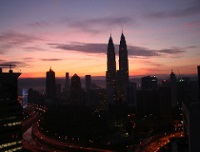
Petronas Towers
The Petronas Towers were designed to capture Malaysia's emergence as Southeast Asia's cultural and commercial centre. Celebrated as the world's tallest twin towers, they dominate t…
Petronas Towers
The Petronas Towers were designed to capture Malaysia's emergence as Southeast Asia's cultural and commercial centre. Celebrated as the world's tallest twin towers, they dominate the city skyline. Architects followed the traditional geometric principles of Islamic architecture when designing the buildings, using modern technology to stunning effect. Joined by a skybridge on the 41st floor, the towers are used as office complexes that form part of the Kuala Lumpur City Centre Development Park. They're particularly beautiful when lit up at night. Tours include crossing the famous bridge and going up to an observation deck on the 86nd floor, which offers phenomenal, 360-degree views of the city. Visitors can also enjoy an exhibition detailing the development of the towers, and purchase souvenirs at a gift shop.
Website www.petronastwintowers.com.my
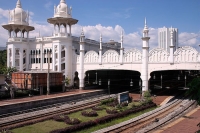
Kuala Lumpur Railway Station
British colonial architect Arthur Benison Hubback was inspired by Moorish, Mughal and Islamic design when he conceived this magnificent railway station. Easily mistaken for a sulta…
Kuala Lumpur Railway Station
British colonial architect Arthur Benison Hubback was inspired by Moorish, Mughal and Islamic design when he conceived this magnificent railway station. Easily mistaken for a sultan's palace, its arches, spires, towers and minarets dazzle against a backdrop of skyscrapers. Inside, visitors will find a small railway museum on the evolution of railway technology in Malaysia. It may be worth a visit for railway enthusiasts. The Kuala Lumpur Railway Station is more of a landmark than an attraction, though, and should only require a quick walk by and photo shoot.
Website www.ktmb.com.my
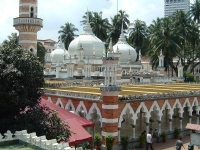
Friday Mosque (Masjid Jamek)
Masjid Jamek (the Friday Mosque) lies where the Klang River meets the Gombak River. Palm trees and curved steps lead to the water's edge, deepening the mosque's air of tranquillity…
Friday Mosque (Masjid Jamek)
Masjid Jamek (the Friday Mosque) lies where the Klang River meets the Gombak River. Palm trees and curved steps lead to the water's edge, deepening the mosque's air of tranquillity. The site is very much a haven within the buzz and rush of Kuala Lumpur. Visitors will find dazzling photo opportunities amid the combination of ancient Moorish, Islam and Mughal architectural styles, and leafy surroundings. Custom demands that they dress conservatively and remove their shoes on entering. Mosque staff will supply men and women with the appropriate attire if necessary. Masjid Negara (the National Mosque) offers a modern contrast to the Friday Mosque and is also worth visiting. Opened in 1965, it's one of the largest in Southeast Asia.
Website www.malaysiasite.nl/masjidjamekeng.htm
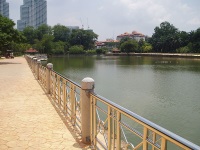
Perdana Botanical Gardens
The beautiful gardens were established in 1888 and are Kuala Lumpur's green belt. To many people, their backdrop of skyscrapers is reminiscent of New York's Central Park. Lush vege…
Perdana Botanical Gardens
The beautiful gardens were established in 1888 and are Kuala Lumpur's green belt. To many people, their backdrop of skyscrapers is reminiscent of New York's Central Park. Lush vegetation surrounds a vast lake, where visitors will find a number of romantic bridges and plenty of space to read, jog or socialise. Leisurely boat cruises are also on offer. Regarding attractions, Bird Park, Butterfly House, the National Monument, the Orchid and Hibiscus gardens and Malaysia's Parliament House are all in the area, and children can enjoy some wonderful playgrounds.
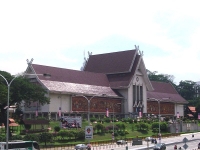
National Museum (Muzium Negara)
Designed to reflect the region's Minangkabau architectural style, the National Museum houses many of Malaysia's cultural treasures and historical artefacts. Its ethnographic and ar
National Museum (Muzium Negara)
Designed to reflect the region's Minangkabau architectural style, the National Museum houses many of Malaysia's cultural treasures and historical artefacts. Its ethnographic and archaeological exhibits include life-size dioramas of traditional Malaysian life.
Puppet-shadow-play (wayang kulit) displays show the country's ancient artistry, while exhibits of traditional weapons such as daggers (kris) and machetes (parangs) reveal Malaysia's pride in functional aesthetic forms. Travellers should note that the museum covers a lot of time and subject matter, and suffers from an occasional lack of linkage between periods. For this reason, visitors should join one of the free guided tours.
Photography is permitted, though only with a hand-held camera and for private use; visitors will find a shop and cafeteria, and features for disabled guests.
Website www.muziumnegara.gov.my


